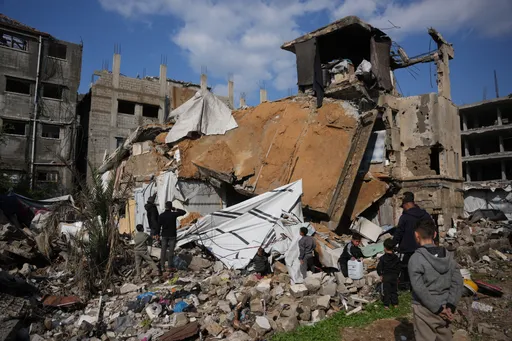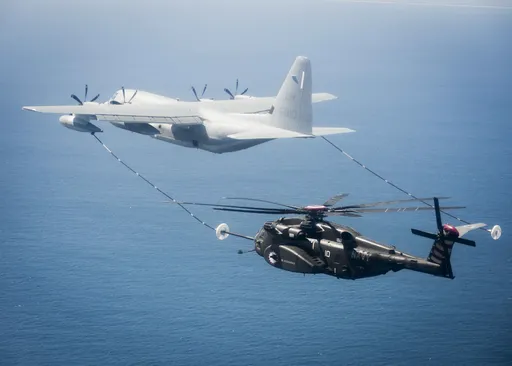It appears like a meticulously crafted high angle shot from a Hollywood flick.
A motorized rickshaw enters the frame from the left, a man, dressed in white, appears from the right with another in black at his heels.
The one in black takes aim at the occipital lobe of the man in front, fires, turns his back to the surveillance camera and runs while – simultaneously – a pick-up van steers past the convulsing victim, Arshid Ahmad Meer, a junior police inspector in his mid-twenties.
He died on September 13.
Within a week another constable Bantoo Ji Sharma was killed in central Kashmir, pushing the death toll of security forces (SFs) to twenty in 2021.
Considering that the average number of SFs – with state police, central paramilitary forces and army personnel – killed in the last five years (2016-2020) was 79, the year has not been as edgy for the forces as the earlier ones.
“There is neither a surge in killing nor is it alarming,” Inspector General of Police (IGP) in Jammu and Kashmir (J&K), Vijay Kumar messaged TRT World.
Yet the trend is troubling.
“A different trend certainly is emerging this year. All policemen killed by the terrorists were unarmed. An inspector was going to offer evening prayer in the nearby mosque, one was playing volleyball and another was on leave,” said Mr Kumar.
The police chief has an explanation for the fresh spurt in violence.
“The police have been maintaining law and order situations professionally. Not a single civilian has been killed while handling situations since August 05, 2019 (when the special status and statehood of J&K was revoked). Even after the death of the separatist leader SAS Geelani, the maintenance of law and order was outstanding. The public appreciated the police,” said the chief.
It frustrated the militants, he argued.
“Therefore terrorists have targeted innocent and unarmed policemen to demoralise the force,” said Mr Kumar.
US troop withdrawal from Afghanistan is another concern for India’s security establishment.
Last time – in 1989 – after the Soviet withdrawal, about 200 Afghan fighters assembled in Kashmir valley and the number of foreign fighters were believed to be about 400, the New York Times reported.
In 2021, 250-300 militants are trained and “ready for launching into Jammu and Kashmir,” on the Line of Control (LoC) between India and Pakistan controlled areas of J & K, said Dilbag Singh, the Director-General of Police (DGP).
A former DGP, Kuldeep Khoda told TRT World that there is “some” concern for India in the valley.
“In the wake of the Afghanistan situation, plenty of Lashkar-e-Taiba and Jaish-e-Mohammed (outlawed terrorist outfits in India) cadres are getting released in the war-torn country. Many of them are working with the Afghan Taliban. Presumably, they will be retrained, remodelled and re-equipped by the Inter-Services Intelligence (ISI) and sent to Kashmir,” said Mr Khoda.
Mr Khoda argued, the grooming of the militants in Pakistan would witness “a spurt in terror activity” if not immediately then over the months.
“We have already witnessed infiltration attempts and encounters in Rajouri and Poonch sector of Jammu which were brought under control since 2005-06.”
In fact, the situation was so comfortable in Poonch that the Indian army allowed this correspondent to roam around in the hilly tract between India-Pakistan on the LoC in 2008 for nearly a day to write on the plight of the people who lost their limbs to land mines.
“However, unlike in 1990, when we were on the back foot, ISI will not be able to trouble us as the situation has changed on ground,” Mr Khoda said.
Pakistan’s intelligence agency could not be accessed to comment on the observation.
A spike in recruitment from the valley is not reported as yet.
“In 2020, the total recruitment of militants in J&K was 167, while it is 88 so far. We have not registered fresh recruitment of the youth in the ranks of the militants after the Taliban take over. The total number of terrorists is approximately 190,” said Mr Kumar.
Approximately 25 percent of the militants were neutralised within “one to three months” of recruitment, denying an opportunity to settle down.
Nonetheless, the police are the most vulnerable among the forces.
They are engaged in day to day maintenance of public amenities – like the traffic – and concurrently assigned to gather local intelligence. They neither reside in a secured compound – like the army or the central forces – nor do they move in companies.
“In case of an operation, the police are at the forefront as they know the terrain and the people, while the army provides the firepower and the central paramilitaries form the outer cordon to increase the thrust of the operation,” said Mr Khoda.
Thus, with a spurt in militancy, more policemen are targeted, the former DGP said.
‘Indescribable silence’
A veteran journalist, Pushp Saraf, originally a resident of Jammu, argued that the “indescribable silence in the valley is a matter of concern.”
“The people are not vocal. Militant and separatist leaders are behind the bars. However, the leaders of the mainstream political parties – Mehbooba Mufti or Omar Abdullah – have been speaking lately. The pressure on them has apparently eased,” said Mr Saraf, a keen J&K observer.
He claimed Mr Geelani’s body “was buried early in the morning in a hush-hush manner.”
“The administration anticipated trouble. This is a tell-tale sign of anxiety and tension that indeed exists below the surface.”
The politics of Kashmir has dramatically changed since the state lost its statehood. A prominent former mainstream leader said on condition of anonymity said, Kashmir is “now entirely” ruled from Delhi with the help of the administrators.
“Politics has ceased to exist. Earlier the leaders were holding the middle ground between Delhi and the people. It vanished.”
A change in tactics
A massive surge in protest following the death of a militant commander Burhan Wani in 2016 sparked extremely bad press for India as many were killed or blinded, being hit by the metal pellets. The situation spiralled out of control within the “first 36 hours as 16 persons were killed,” a senior officer told this correspondent in 2019.
Delhi realised the pressing need to change the counter-insurgency tactics before the statehood was revoked.
“Earlier we branded every voice against India as an act of terror and the counter-insurgency mechanism was geared to combat terror. We realised, everything was not terror,” the officer said.
The process was fine-tuned and the majority of local unrest was quelled through arrests. A long-drawn process of prosecution, a tactic often used in Indian states, was adopted.
Key leaders were detained and the internet was indefinitely shut. The strategy to de-link separatists from civilians was beneficial. The administration could keep the death toll low, as Mr Kumar indicated, and continue – after 2019 – with a series of administrative measures, hitherto unthinkable.
A good example is the recent transfer of a little over three acres of land to the Hindu pilgrimage Amarnath management board at $3.5 per year to construct a tourist shelter. A similar move in the summer of 2008 witnessed a massive surge in protests impeding land transfer, but no one questioned the move in 2021.
Many such moves of the then-Governor General S K Sinha to amend rules backfired. In an interview with this correspondent, he rued: “My efforts failed in Kashmir (but)…the war for Kasmiriyat will be won.”
Many of the beleaguered General’s wishes – like naming schools after “our martyrs” in SFs – were addressed recently through executive orders.
Dozens of orders, from imposing restrictions on animal slaughter during Eid-ul-Adha in J&K – with a 68 percent Muslim population – to ‘periodic verification of character and antecedents of the government employees and non-issuance of passports to erstwhile protestors, were issued lately to predominantly re-align the cultural ethos.
“We are trying to streamline the process,” an administrator said.
‘Excellent blocking of news dissemination’
One community which could have made noise – as they did in the past – are the journalists and chroniclers. But a dozen of them, including senior ones, claimed that they “do not have the medium” to tell Kashmir’s story anymore.
“The postman can deliver a letter only if there is a post office. What if the post offices are rooted out,” asks a scribe in an allusion to The Country Without a Post Office, a verse collection of the late Kashmiri-American poet, Agha Shahid Ali.
A senior journalist worded the allusion.
“Local newspapers cannot publish a thing against the government – even on corruption – as they are entirely dependent on government advertisement.” Papers which could still publish columns, political opinions and occasional audacious reports, before 2019, were “muted.”
“A paper reported extensively about the Taliban and another on Geelani’s funerals and both – I am told – will suffer while the valley’s chief administrator, the Lieutenant Governor’s photos are pasted all over.”
“India’s national press has little leeway to report and that leaves us with the international press. Considering the depth of the conflict and the number of people affected, Kashmir cannot dominate the global newsrooms routinely,” he said.
In addition, journalists – young and old – are often summoned to the police station and warned. Some are informally notified by their friends and many of them cannot be reached as their phones are either confiscated or disabled by themselves.
“Plenty have left journalism and gone into reading or memoir writing,” a young reporter said.
Social media – after dominating Kashmir coverage for a decade – has gone quiet as it is easier to identify the influencers on the net.
“The management to terminate news dissemination – I admit – is excellent,” the senior journalist concurred.
“A handful of freelancers write for the portals – mostly without a fee – and I am not sure why they do that.” A wry laughter reverberates in the room.
IGP Vijay Kumar denies that journalists are subjected to more pressure of late.
“It is totally incorrect,” he said.
“There has been a very few instances where journalists were involved in terrorism directly (and) were arrested, questioned. Recently one journalist was arrested with two grenades. Besides, some journalists were found spreading fake news or videos with an intention to instigate the law and order problems. They were called and questioned,” Mr Kumar said.
“Overall relation and synergy between the police and the journalists has been traditionally excellent in Kashmir valley. We work together on several issues like the drug menace,” Mr Kumar said, appending a plea: “As the police chief of Kashmir, (I) appeal to parents and the families to convince their wards who joined terrorism recently to come back to the family, focus on studies and become a good citizen.”
Some parents agree with what the police chief advised.
“I want my elder son to move to the US for Masters. But he wants to stay put and write,” said an annoyed mother of two from a business family.
























